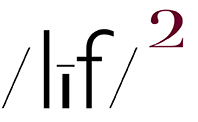(embiggenable) - iPhone 11 Pro Max
comparo ~ (embiggenable) - iPhone 12 Pro Max Night Mode
WITHOUT A DOUBT AND WITH ONLY A FEW pictures made with the iPhone 12 Pro Max, I can write that the new sensor(s?)-47% larger sensor and larger pixels (same 12mp) and the new OIS stabilizes the sensor, not the lens-on the 12 is a significant upgrade over the iPhone 11 Pro Max. The upgrade is most apparent with the Night Mode function. An improvement that is well worth the upgrade. However ....
....Apple seems to believe that, when making a picture in low-light, everyone wants night to look like day. See the above comparo diptych where the left-side image is how the Nighy Mode saw it and the right-side image is much closer, after my processing adjustments, to how the scene actually looked. While most users might be impressed-"Wow. That's amazing"-by the night-into-day look, I want my low-light pictures to look like they were made in low light.
That written, it is no big deal to adjust-for me, using Snapseed-an image to more accurately portray the low light look. After all, I adjust, to some degree, just about every image I make with just about every picture making device I use.
Another case in point with the iPhone, low contrast scenes require processing adjustment inasmuch as the HDR function with the iPhone wants every picture to be a "perfect" Ansel Adams like, 10-Zone white>black picture. Even so when there is no almost pure white highlight or deep black/dark shadow tones in the actual scene. Once again, it is no big deal to process the image to get it to be more true to the actual scene.
It is possible that Apple devlopers, re: the camera module, are required to listen to and sing, over and over again, the refrain from Paul Simon's Kodachrome song...
They give us those nice bright colors
They give us those greens of summer
Makes you think all the world's a sunny day, oh yeah
Whatever the case, I like the fact that the iPhone camera module gives me a full-tonal range, AKA: "rich", image file-including a RAW file if I want one-which I can adjust / process to achieve a finished picture which closely resembles what my eye saw.
